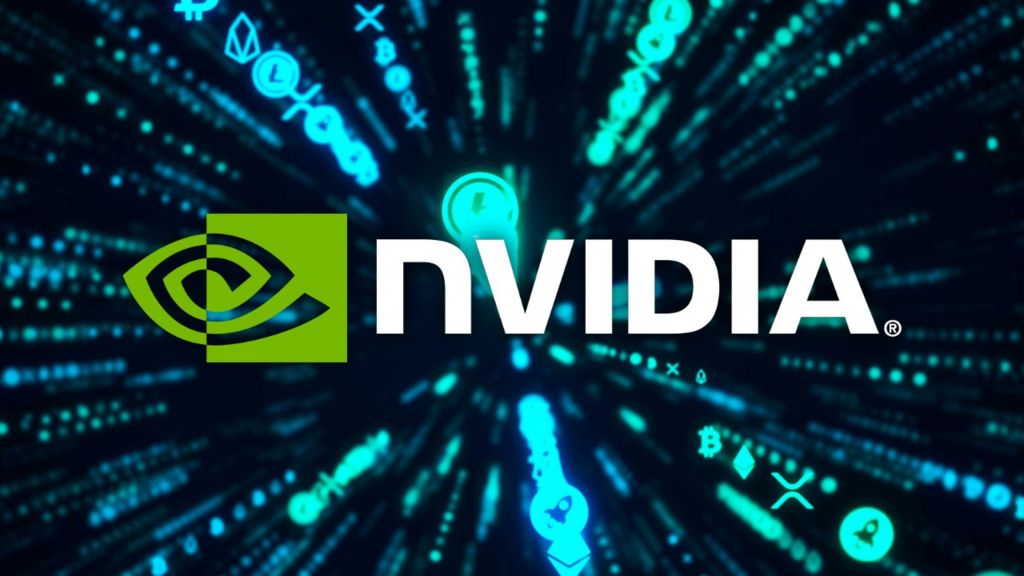
Nvidia: Pioneering the Future of AI and Computing
Share
Nvidia, founded in 1993, has emerged as a trailblazer in graphics processing technology and artificial intelligence (AI), revolutionizing the computing landscape. Known for its high-performance GPUs, Nvidia’s innovations have become integral to advancements in gaming, professional visualization, data centers, and AI research.
Founding and Early Challenges
Nvidia was founded by Jensen Huang, Chris Malachowsky, and Curtis Priem with a vision to create graphics processors that could deliver unprecedented performance. From its inception, Nvidia aimed to push the boundaries of visual computing. Despite initial challenges in a competitive market, Nvidia's breakthrough technologies quickly garnered attention, establishing the company as a leader in GPU technology.
Key Technologies: GPUs and AI
Nvidia's core offerings include its graphics processing units (GPUs) and AI platforms:
GPUs: Nvidia’s GeForce and Quadro series have set benchmarks in gaming and professional visualization. The introduction of the CUDA architecture enabled developers to harness the parallel processing power of GPUs, significantly accelerating computational tasks across various industries. Nvidia's GPUs are now essential in fields ranging from gaming and film production to scientific research and deep learning.
AI Platforms: Nvidia’s advancements in AI are underscored by its CUDA-X AI platform and the development of AI-specific hardware, such as the Tensor Core GPUs. These innovations have propelled Nvidia to the forefront of AI research, enabling breakthroughs in machine learning, autonomous driving, and robotics. Companies like Tesla utilize Nvidia’s hardware for their Full Self-Driving (FSD) technology, showcasing the transformative potential of Nvidia’s AI solutions.
Impact Across Industries
Gaming: Nvidia revolutionized gaming with its GeForce line, delivering realistic graphics and high frame rates. The introduction of technologies like Ray Tracing and DLSS (Deep Learning Super Sampling) has set new standards for visual fidelity and performance in gaming.
Automotive: Nvidia’s DRIVE platform is at the heart of autonomous driving technologies. By providing AI computing platforms and software, Nvidia supports automakers in developing self-driving cars, enhancing safety, and improving vehicle performance. Tesla’s use of Nvidia’s AI hardware exemplifies the synergy between advanced computing and autonomous technology.
Healthcare and Research: In healthcare, Nvidia’s GPUs accelerate research in genomics, drug discovery, and medical imaging. The company’s technology enables faster data processing, enhancing the capabilities of research institutions and medical facilities worldwide.
Data Centers: Nvidia’s GPUs have become the backbone of modern data centers, powering AI training and inferencing tasks at unprecedented scales. The introduction of the Nvidia A100 Tensor Core GPU has set new performance benchmarks for AI workloads, significantly enhancing the efficiency and speed of data processing.
Artificial Intelligence and Future Directions
Under the leadership of Jensen Huang, Nvidia continues to push the envelope in AI and computing technology. The company is expanding its reach in AI research with initiatives like the Nvidia AI Research Lab and the development of the Omniverse platform, a virtual collaboration space that leverages AI and simulation to enhance creative workflows across industries. Nvidia’s ongoing investment in AI and computing infrastructure aims to drive further advancements in AI, robotics, and virtual reality.
Ethical Considerations and Privacy
Nvidia’s role in AI development brings ethical considerations to the forefront, particularly regarding AI safety, bias, and data privacy. The company is committed to addressing these challenges, advocating for responsible AI development, and collaborating with industry leaders and policymakers to establish ethical guidelines for AI technology.
Conclusion
Nvidia has revolutionized the landscape of graphics technology and artificial intelligence with its groundbreaking GPUs and AI platforms. From transforming gaming and automotive technologies to advancing healthcare and research, Nvidia’s impact is profound and far-reaching. As the company continues to innovate and expand its influence, Nvidia’s commitment to pushing the boundaries of technology ensures its pivotal role in shaping the future of AI and computing.
Founding and Early Challenges
Nvidia was founded by Jensen Huang, Chris Malachowsky, and Curtis Priem with a vision to create graphics processors that could deliver unprecedented performance. From its inception, Nvidia aimed to push the boundaries of visual computing. Despite initial challenges in a competitive market, Nvidia's breakthrough technologies quickly garnered attention, establishing the company as a leader in GPU technology.
Key Technologies: GPUs and AI
Nvidia's core offerings include its graphics processing units (GPUs) and AI platforms:
GPUs: Nvidia’s GeForce and Quadro series have set benchmarks in gaming and professional visualization. The introduction of the CUDA architecture enabled developers to harness the parallel processing power of GPUs, significantly accelerating computational tasks across various industries. Nvidia's GPUs are now essential in fields ranging from gaming and film production to scientific research and deep learning.
AI Platforms: Nvidia’s advancements in AI are underscored by its CUDA-X AI platform and the development of AI-specific hardware, such as the Tensor Core GPUs. These innovations have propelled Nvidia to the forefront of AI research, enabling breakthroughs in machine learning, autonomous driving, and robotics. Companies like Tesla utilize Nvidia’s hardware for their Full Self-Driving (FSD) technology, showcasing the transformative potential of Nvidia’s AI solutions.
Impact Across Industries
Gaming: Nvidia revolutionized gaming with its GeForce line, delivering realistic graphics and high frame rates. The introduction of technologies like Ray Tracing and DLSS (Deep Learning Super Sampling) has set new standards for visual fidelity and performance in gaming.
Automotive: Nvidia’s DRIVE platform is at the heart of autonomous driving technologies. By providing AI computing platforms and software, Nvidia supports automakers in developing self-driving cars, enhancing safety, and improving vehicle performance. Tesla’s use of Nvidia’s AI hardware exemplifies the synergy between advanced computing and autonomous technology.
Healthcare and Research: In healthcare, Nvidia’s GPUs accelerate research in genomics, drug discovery, and medical imaging. The company’s technology enables faster data processing, enhancing the capabilities of research institutions and medical facilities worldwide.
Data Centers: Nvidia’s GPUs have become the backbone of modern data centers, powering AI training and inferencing tasks at unprecedented scales. The introduction of the Nvidia A100 Tensor Core GPU has set new performance benchmarks for AI workloads, significantly enhancing the efficiency and speed of data processing.
Artificial Intelligence and Future Directions
Under the leadership of Jensen Huang, Nvidia continues to push the envelope in AI and computing technology. The company is expanding its reach in AI research with initiatives like the Nvidia AI Research Lab and the development of the Omniverse platform, a virtual collaboration space that leverages AI and simulation to enhance creative workflows across industries. Nvidia’s ongoing investment in AI and computing infrastructure aims to drive further advancements in AI, robotics, and virtual reality.
Ethical Considerations and Privacy
Nvidia’s role in AI development brings ethical considerations to the forefront, particularly regarding AI safety, bias, and data privacy. The company is committed to addressing these challenges, advocating for responsible AI development, and collaborating with industry leaders and policymakers to establish ethical guidelines for AI technology.
Conclusion
Nvidia has revolutionized the landscape of graphics technology and artificial intelligence with its groundbreaking GPUs and AI platforms. From transforming gaming and automotive technologies to advancing healthcare and research, Nvidia’s impact is profound and far-reaching. As the company continues to innovate and expand its influence, Nvidia’s commitment to pushing the boundaries of technology ensures its pivotal role in shaping the future of AI and computing.
